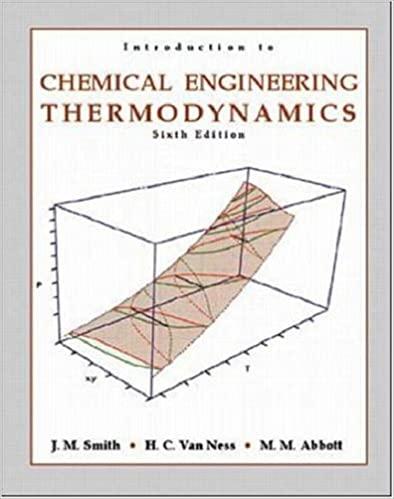Answered step by step
Verified Expert Solution
Question
1 Approved Answer
Table 1. Standard state free energy changes and equilibrium constants for several chemical reactions (25 o C). Reaction Delta G o , kJ/mol K NaCl(s)
Table 1. Standard state free energy changes and equilibrium constants for several chemical reactions (25oC).
| Reaction | Delta Go, kJ/mol | K |
| NaCl(s) <---> Na+(aq) + Cl-(aq) | -9.00 | 38 |
| NH4NO3(s) <--> NH4+(aq) + NO3-(aq) | -4.31 | 5.7 |
| Zn(s) + Cu2+(aq) <--> Cu(s) + Zn2+(aq) | -212.4 | 1.6 x 1037 |
| 2Cl-(1M) + Br2(l) <--> 2Br-(aq) + Cl2(g) | 59.45 | 3.9 x 10-11 |
| CH3COOH(aq) <--> CH3COO-(aq) + H+(aq) | 27.18 | 1.8 x 10-5 |
- Calculate DGo for the reaction
Delta G = 18.1 KJ/mole
HF(aq) H+(aq) + F-(aq)
Use this data to calculate Ka for hydrofluoric acid.
- Consider the reaction CO2(g) + H2(g) CO(g) + H2O(g). Calculate DHo, DSo, DGo, and K for this reaction at 25oC. Predict the effect on the equilibrium constant when the temperature of the system is increased.
- Without referring to tables to calculate Delta Ho and delta So, predict the signs of delta Ho and DSo for the reaction NH3(aq) NH3(g). Explain why the odor of NH3(g) that collects above an aqueous solution of ammonia becomes more intense as the temperature is increased.
- Explain why the equilibrium constant for the reaction below decreases as the temperature increases.
N2(g) + 3H2(g) 2NH3(g)
Step by Step Solution
There are 3 Steps involved in it
Step: 1

Get Instant Access to Expert-Tailored Solutions
See step-by-step solutions with expert insights and AI powered tools for academic success
Step: 2

Step: 3

Ace Your Homework with AI
Get the answers you need in no time with our AI-driven, step-by-step assistance
Get Started


